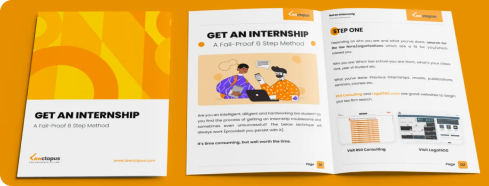In today’s knowledge-driven economy, intellectual property (IP) is often more valuable than physical assets. For businesses, innovation, branding, and creative works are essential competitive advantages. Employees, in the course of their work, frequently generate intellectual property that can directly impact the company’s growth. This raises an important legal question: who owns the intellectual property created by employees?
The answer is not always straightforward. While laws generally recognize the creator as the first owner of intellectual property, employment relationships complicate this principle. Employers typically expect that works created by employees during their tenure belong to the company, but this expectation must be backed by proper legal arrangements. This is where assignment of intellectual property rights (IPR) comes into play.
This blog explores the concept of IPR in the workplace, the rules governing ownership, how assignment operates, the legal issues that arise, and best practices for both employers and employees.
Understanding Intellectual Property in the Workplace
Intellectual property (IP) refers to creations of the human mind that are legally protected. The main categories relevant in employment are:
- Patents – Protect inventions and technical solutions. Example: an R&D employee inventing a new drug molecule.
- Copyrights – Protect original works of authorship such as code, writings, music, or designs. Example: a software developer writing a new program.
- Trademarks – Protect brand identifiers like logos, names, and slogans. Example: a marketing team designing a new company logo.
- Designs – Protect the aesthetic aspects of products. Example: an industrial designer creating a unique chair design.
- Trade secrets and confidential information – Protect sensitive business information, such as formulas, customer lists, or processes. Example: a beverage company’s secret recipe.
Employees contribute significantly to these forms of IP. The complexity arises when the same individual creates something outside the strict scope of employment but still related to the company’s business. Without clarity in contracts, disputes are inevitable.
Ownership of IP Created by Employees
The general principle is simple: the creator of intellectual property is the first owner. However, employment law carves out an important exception. If an employee creates intellectual property in the course of employment, ownership typically vests in the employer.
For example:
- If a programmer employed by a tech company develops a mobile application as part of her job duties, the employer owns the copyright.
- If an engineer at an automobile company invents a new engine design while working on a company project, the employer is entitled to file a patent in its name.
However, the situation changes when the individual is an independent contractor rather than an employee. A freelancer designing a logo for a company is the first owner of the copyright, unless there is a written assignment transferring rights to the company.
Assignment of Intellectual Property Rights
Assignment is the process by which ownership of intellectual property is transferred from one party to another. It is distinct from a license, which only grants permission to use IP without transferring ownership.
For employers, assignment clauses in employment agreements are critical to ensure that any IP created by employees automatically belongs to the company. Such clauses typically cover:
- Present assignment of rights (“I hereby assign”) instead of future promises (“I will assign”).
- All types of IP created during employment, regardless of whether developed on company premises or using company resources.
- Post-employment creations, especially if developed using confidential information obtained during employment.
Examples:
- A clear assignment clause: “The employee hereby assigns to the employer all rights, title, and interest in any intellectual property created during the course of employment.”
- An ambiguous clause: “The employee will consider assigning rights to the employer upon request.” Courts often rule that the latter does not effect an automatic transfer.
The importance of wording was highlighted in Stanford University v. Roche Molecular Systems (US, 2011). Stanford lost ownership of certain patent rights because its employment contract only contained a promise to assign rights in the future, while Roche had secured a present assignment.
In India, assignments of copyright and patents must be in writing and signed, specifying the scope, duration, and territory. Without these, the assignment may be void or limited.
Key Legal Issues and Challenges
Despite clear principles, several challenges arise in practice:
- Ambiguity in Scope
- If an employee develops software at home on personal equipment but related to the employer’s business, does the employer own it? Courts often look at whether the work was created “in the course of employment” or on personal initiative.
- Use of Company Resources
- Some jurisdictions (like the US) allow employers to claim ownership if work was created using company resources, even outside work hours.
- Moral Rights
- Authors retain moral rights such as the right to be credited, even if economic rights are assigned. Example: a graphic designer’s right to be acknowledged as the creator of a logo.
- Confidentiality and Trade Secrets
- Employees may inadvertently disclose or use trade secrets after leaving employment. Confidentiality clauses and NDAs are critical safeguards.
- Jurisdictional Differences
- In the UK, Section 11 of the Copyright, Designs and Patents Act 1988 provides that employers own works created “in the course of employment.”
- In the US, the “work for hire” doctrine applies, but independent contractors are excluded unless there is a written agreement.
- In India, statutes emphasize written agreements and specific assignments.
Conclusion
Intellectual property is often the crown jewel of modern businesses, and clarity over ownership is essential. While laws generally vest ownership of employee-created IP in employers, ambiguities can lead to expensive disputes. Assignments of intellectual property rights, when clearly drafted and executed, provide the legal certainty needed to balance employer interests with employee rights.
Ultimately, both parties benefit from transparency. Employers safeguard their investments, while employees gain clarity on their rights and avoid future conflicts. In an era where innovation is currency, proactive legal drafting and mutual understanding are the best safeguards




